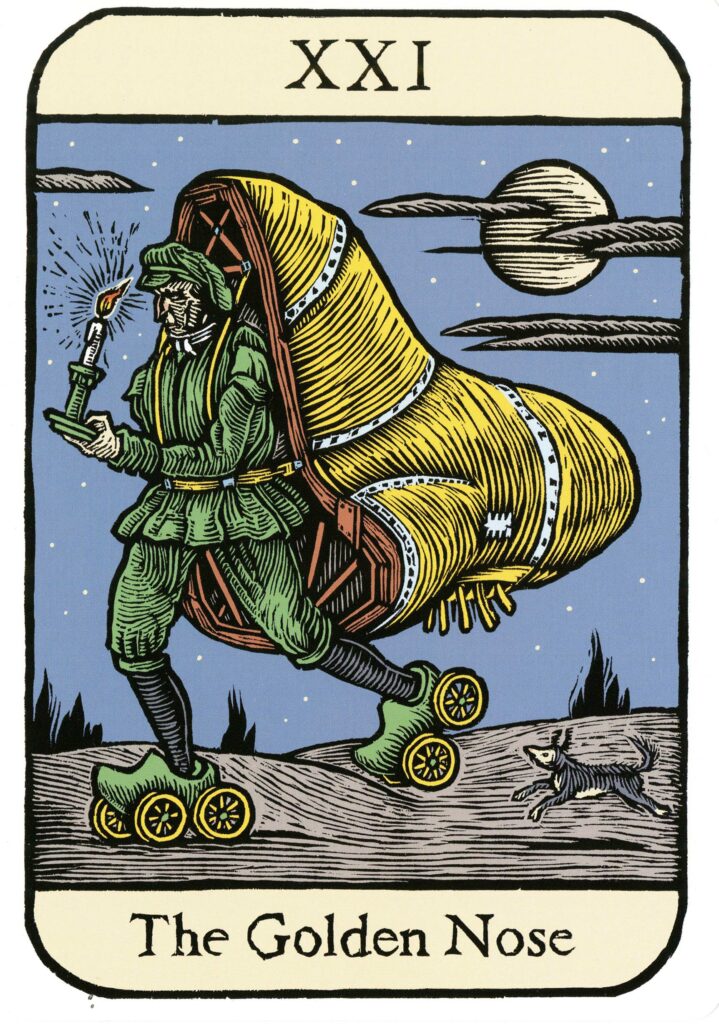The Graduate Theological Union is in some ways a child of the Sixties, founded in 1962 to consolidate the educational efforts of seminaries in the San Francisco Bay Area. Over the decades, its efforts have included visual and performance art and religion and became broadly interreligious, adding graduate degree opportunities to study major religions and unique spiritual practices.
In the Seventies, the GTU founded a Center for the Study of New Religious Movements (1977 to 1983). The Center focused on cults, such as People’s Temple, and organizations with New Age or Asian-influenced spiritual practices, such as Hare Krishna, and explored different American religious experiments.
The Center collected materials on many organizations and leaders, but very little on the Tarot, which has emerged as an effective vehicle to express and explore different spiritual traditions. In the 20th century, California — Los Angeles in particular–became a center for the study of the occult. Several organizations promoted the study of esoterica, magic, and the Tarot.
The Builders of the Adytum (B.O.T.A.) taught a form of the Golden Dawn tradition through Paul Case, a former member and their leader. Manly P. Hall founded the Philosophical Research Society in 1934 and taught religious, philosophical, and symbolic traditions. The Church of the Light, primarily through the writings of C. C. Zain (Benjamin Parker Williams), taught occult sciences through lectures and correspondence courses. They moved to Albuquerque, New Mexico, in 2005, while the others have remained in the Los Angeles area. Each created a Tarot deck. The GTU library has works from each organization.
Later in the 20th century, the Bay Area contributed to the development of modern Tarot. Among the contributions were influential New Tarots by Cooke and Hall, and Jack and Rae Hurley and Horler, along with women-oriented decks by Billie Potts and others, with inspiration from Starhawk. Activities included the Bay Area Tarot Network, the Thursday night meetings, and Cabala or Kaballah studies.
Within our archives and special collections, we have collections on Wiccan and eco-feminism (Starhawk), phrenology (insight based on physical characteristics), human development (est and others), and various newsletter and correspondence materials (Rosicrucian Monographs and the Church of Light). One unique collection contains the notes and writings on the New, Reformed, Orthodox Order of the Golden Dawn from the 1970s, a short-lived group in the Bay Area, which was donated by a GTU graduate.
Prompted by the current exhibition, additional Tarot resources have been added, reflecting the worldwide interest in Tarot as a form of multi-purpose meditative, cultural, and spiritual tool.
This is the second online exhibit by the Library that is a result of COVID-19. Our original plan had been to select a variety of Tarot decks, add supporting materials, and place them in our exhibit cases. While we created a small exhibit for the students, faculty and staff who still had access to the building in 2021-22, we also have been working on this online exhibit.
Some of the decks illustrated here are from the collection of Clay-Edward Dixon, GTU’s previous library director and current Head of Collection Development. Other decks, with several exceptions, were purchased, along with additional resources, to create a Tarot Collection within our special collections.
Assisting with the exhibition are Dr. Kathryn Barush, Assistant Professor of Art History and Religion; Colyn Wolhmut, Library Director at the time; and Caryl Woulfe, assistant to the Library Director. Outside assistance included Hettienne Grobler, creator of The Mysteries of the Black Madonna Tarot and The Mysteries of Mary Tarot, and Ellis Nadler, creator of the Cards of U’ut, cards inspired by the Tarot. And the music of the Grateful Dead.
This online exhibition is made possible by the Jane Dillenberger Fine Arts Endowment Fund.

A wandering peddler
A seller of noses
Oppressed by the burghers
Who cavil and sneer
His glimmering candle
Of feeble awareness
Will banish all darkness
To make the way clear
XXI, The Golden Nose, The Cards of U’ut, Ellis Nadler, Triboulet Books 2011. A series of 37 woodcuts in the form of tarot cards. 21cm x 15cm. “These cards can be seen as a work of art, a piece of autobiography, an elaborate prank, a method of divination, or all four things at once.” (http://eliahu.squarespace.com/cards-of-wu/)

Le Bateleur (“mountbank”), etching by Michael Morris, OP (1949-2016). This is what has become a common artistic practice: creating a single or a few cards rather than the Major Arcana or the whole deck.
Fr. Michael was a professor at Dominican School of Philosophy and Theology; writer on religious art and iconography; collector of religious cinema posters; biographer of film and costume designer and wife of Rudoph Valentino, Natacha Rambova; artist; and member of the Library’s Art Exhibition Committee.